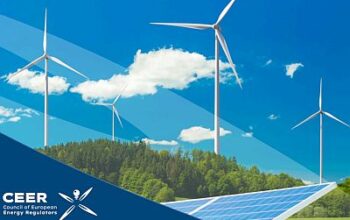ERRA Regulatory Story of the Quarter: Price Zero, Or Less, For 17 Hours In A Row: “Happy Hours” For Electricity in France
ERRA Report: Energy Transition in Selected Economies with Coal-Fired Electricity Sectors
ACER Report: Key Developments in European Electricity and Gas Markets
ERRA Regulatory Story of the Quarter: The Novel Electricity Market Aggregator Regulation in Türkiye
ERRA Issues Two Nuclear Forum Summary Reports
CEER Report: Impact of High Market Prices on Renewables
DNV’s Energy Transition Outlook 2024
ERRA-RAP Study: Navigating Power Grid Scarcity in the Age of Renewable Energy – Policy and Regulatory Context and Tools
Eurelectric’s Report: Power Barometer 2024
IEA Publication: Integrating Solar and Wind – Global experience and emerging challenges
CEER Report: Beyond the Crisis – Consumer Protection and Market Measures for Better Functioning Markets
Regulatory sandboxes and pilot projects: Trials, regulations, and insights inenergy transition
On June 5th, 2025 France experienced a special event of the power system. Despite being a normal working day, the day-ahead market recorded electricity prices in France equal to zero or slightly negative for a full row of 17 consecutive hours, marking an unprecedented record for the duration of this phenomenon, which signals a production surplus.
Phasing out coal is a quite challenging task for energy policy in the modern era. It involves the very particular need to balance technical, financial, social, and regulatory difficulties.
This ACER Monitoring Report on key developments in EU energy markets highlights major trends in 2024, focusing on the interaction between gas and electricity. It sets out ACER’s recommendations on how Europe can unlock a clean, secure and competitive energy future.
The ERRA Regulatory Story of the Quarter discussed Türkiye’s new Electricity Market Aggregator Regulation in an interview with Mr. Mr. Ahmet Çağrı Çiçek, Commissioner at EMRA and ERRA Presidium member.
As a product of the Nuclear Energy Regulatory Forum (NERF), held in Warsaw on June 6-7, 2024, ERRA is pleased to share the two reports summarizing the key findings of the Forum’s sessions 3-4-5.
This CEER Report aims to provide some insight into how high market prices affected supported RES in Europe.
The global energy landscape is evolving, with an increasing focus on sustainability and the transition towards
cleaner energy sources.
Grid scarcity in countries characterized by a high phase of renewable energy integration is one of the key barriers for their successful energy transition. As the issue becomes more apparent also among ERRA member countries, the Association issues the Study on how grid scarcity is perceived among ERRA regulators and how the issue can be tackled with the right tools.
To stay competitive and decarbonise, the EU needs a robust electrification strategy. Read the Power Barometer 2024 report to explore more insights and data that will shape the future of European industry.
The global energy landscape is evolving, with an increasing focus on sustainability and the transition towards
cleaner energy sources.
The Council of European Energy Regulators (CEER) released its new report Beyond the Crisis: Consumer Protection and Market Measures for Better Functioning Markets. The report examines the measures implemented across Europe to address the challenges posed by the recent energy crisis and reflects on the lessons learned to create more consumer-centric energy markets.
The global energy landscape is evolving, with an increasing focus on sustainability and the transition towards
cleaner energy sources.














